Simulation Standard
Technical Journal
A Journal for Process and Device Engineers
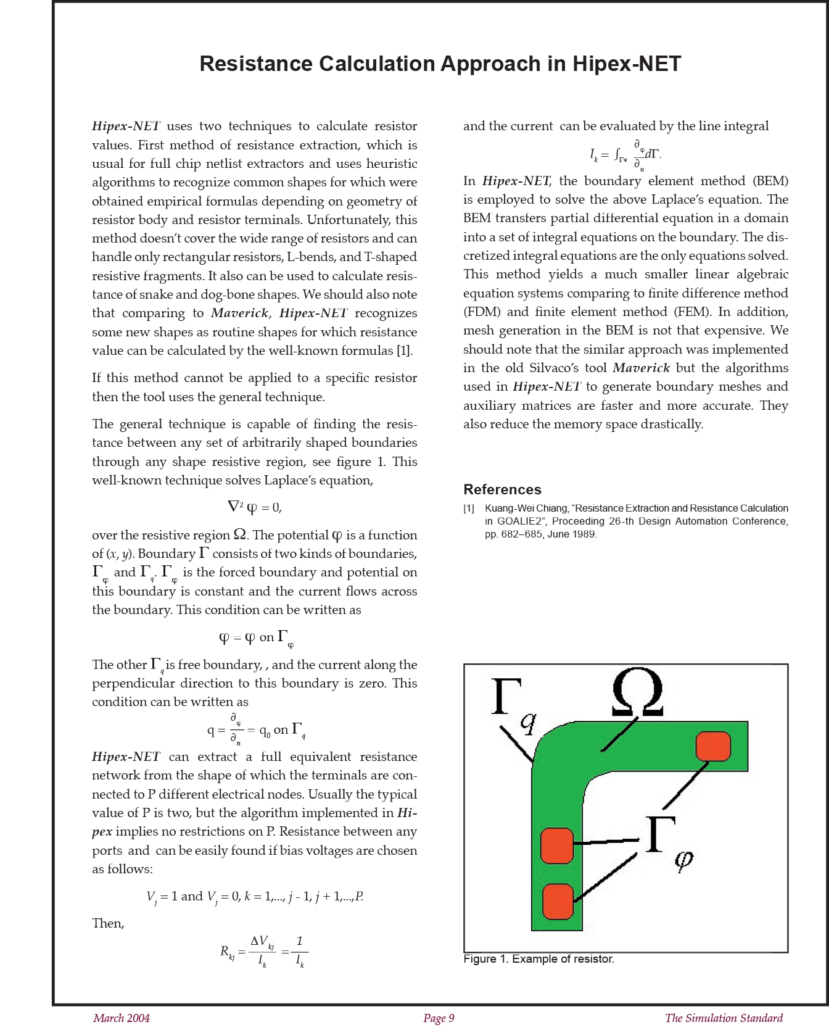
Resistance Calculation Approach in Hipex-NET
Hipex-NET uses two techniques to calculate resistor values. First method of resistance extraction, which is usual for full chip netlist extractors and uses heuristic algorithms to recognize common shapes for which were obtained empirical formulas depending on geometry of resistor body and resistor terminals. Unfortunately, this method doesn’t cover the wide range of resistors and can handle only rectangular resistors, L-bends, and T-shaped resistive fragments. It also can be used to calculate resistance of snake and dog-bone shapes. We should also note that comparing to Maverick, Hipex-NET recognizes some new shapes as routine shapes for which resistance value can be calculated by the well-known formulas [1].
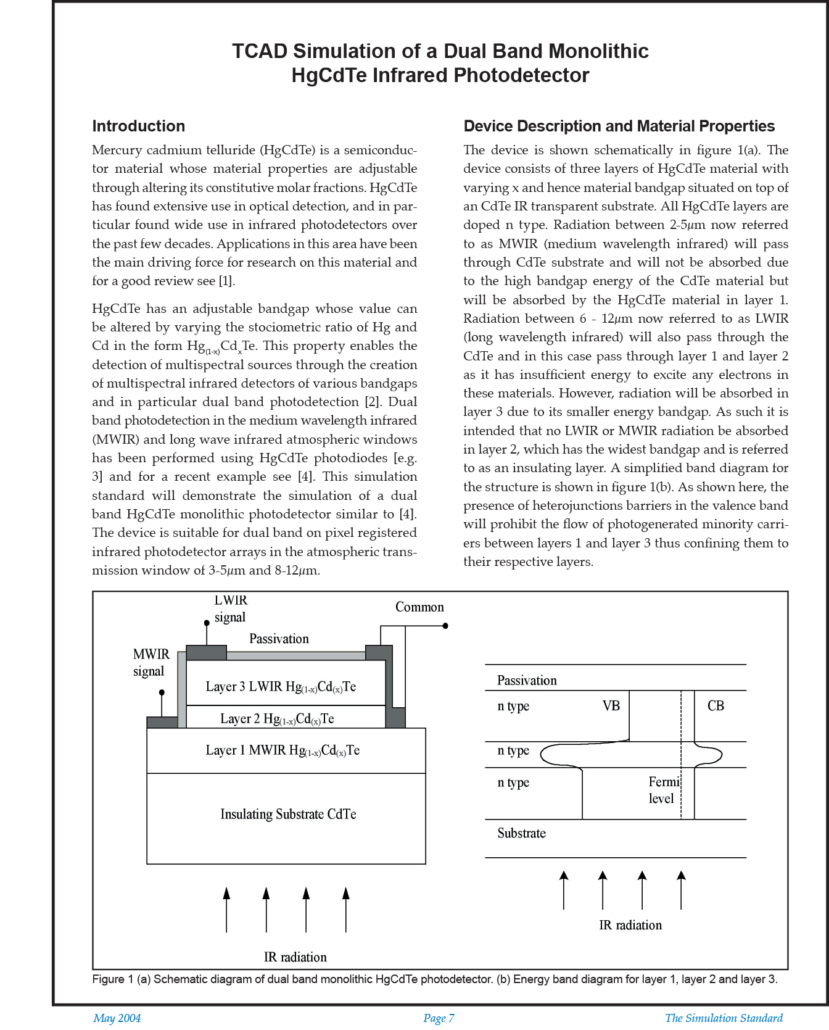
TCAD Simulation of a Dual Band Monolithic HgCdTe Infrared Photodetector
IntroductionMercury cadmium telluride (HgCdTe) is a semiconductor material whose material properties are adjustable through altering its constitutive molar fractions. HgCdTe has found extensive use in optical detection, and in particular found wide use in infrared photodetectors over the past few decades. Applications in this area have been the main driving force for research on this material and for a good review see [1].
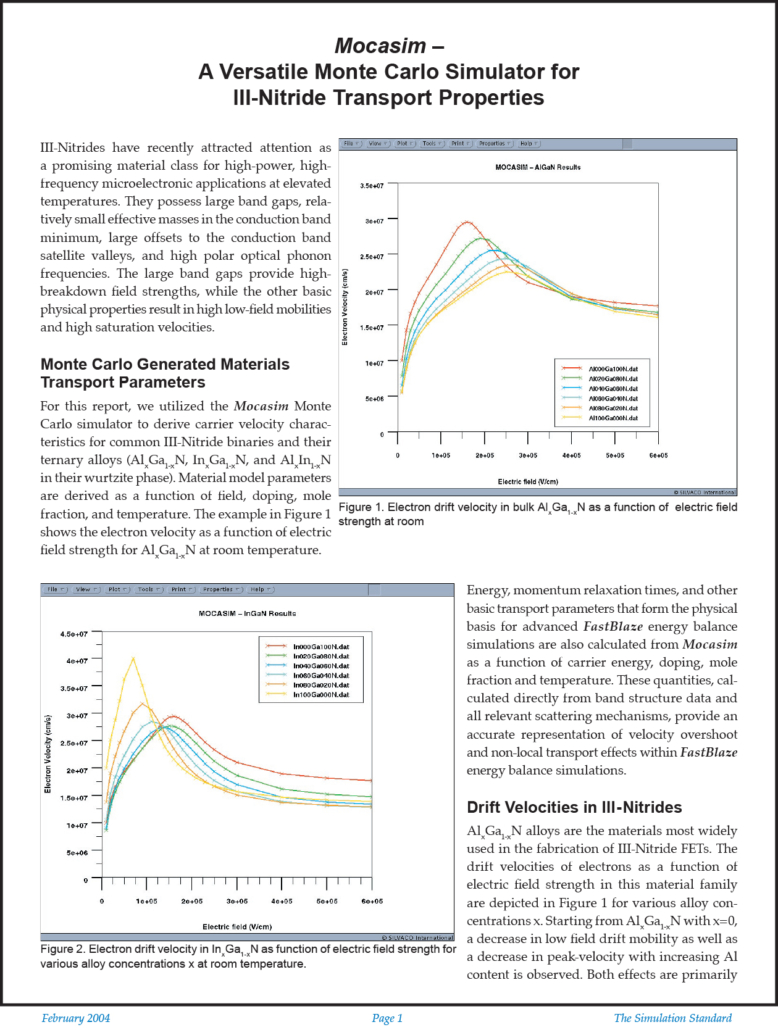
Mocasim – A Versatile Monte Carlo Simulator for III-Nitride Transport Properties
III-Nitrides have recently attracted attention as a promising material class for high-power, high-frequency microelectronic applications at elevated temperatures. They possess large band gaps, relatively small effective masses in the conduction band minimum, large offsets to the conduction band satellite valleys, and high polar optical phonon frequencies. The large band gaps provide high-breakdown field strengths, while the other basic physical properties result in high low-field mobilities and high saturation velocities.
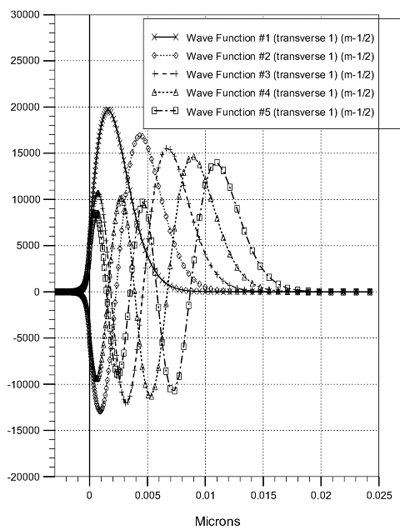
Schrödinger Approach and Density Gradient Model for Quantum Effects Modeling
We describe here two approaches to model the quantum effects that can no more be neglected in actual and future devices. These models are the Schrödinger-Poisson and Density-Gradient methods fully integrated in the device simulator ATLAS. Simulations based on such methods are compared to each other on electron concentration and C-V curves in a MOS-capacitor.
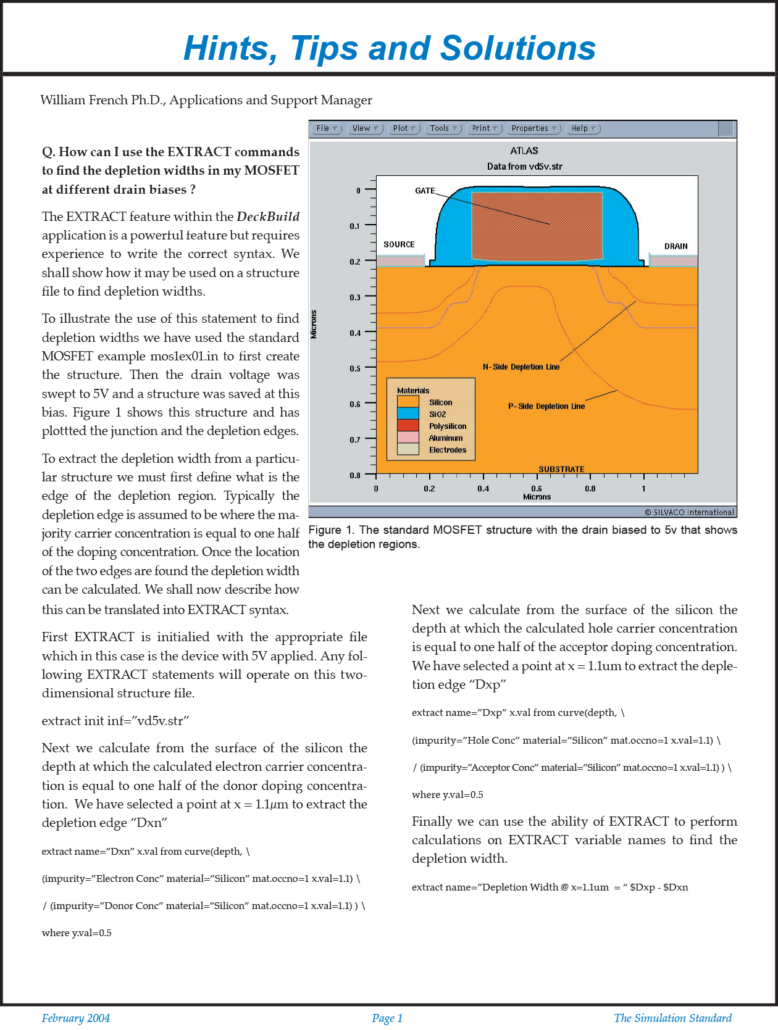
How can I use the EXTRACT commands to find the depletion widths in my MOSFET at different drain biases?
To illustrate the use of this statement to find depletion widths we have used the standard MOSFET example mos1ex01.in to first create the structure. Then the drain voltage was swept to 5V and a structure was saved at this bias. Figure 1 shows this structure and has plottted the junction and the depletion edges.
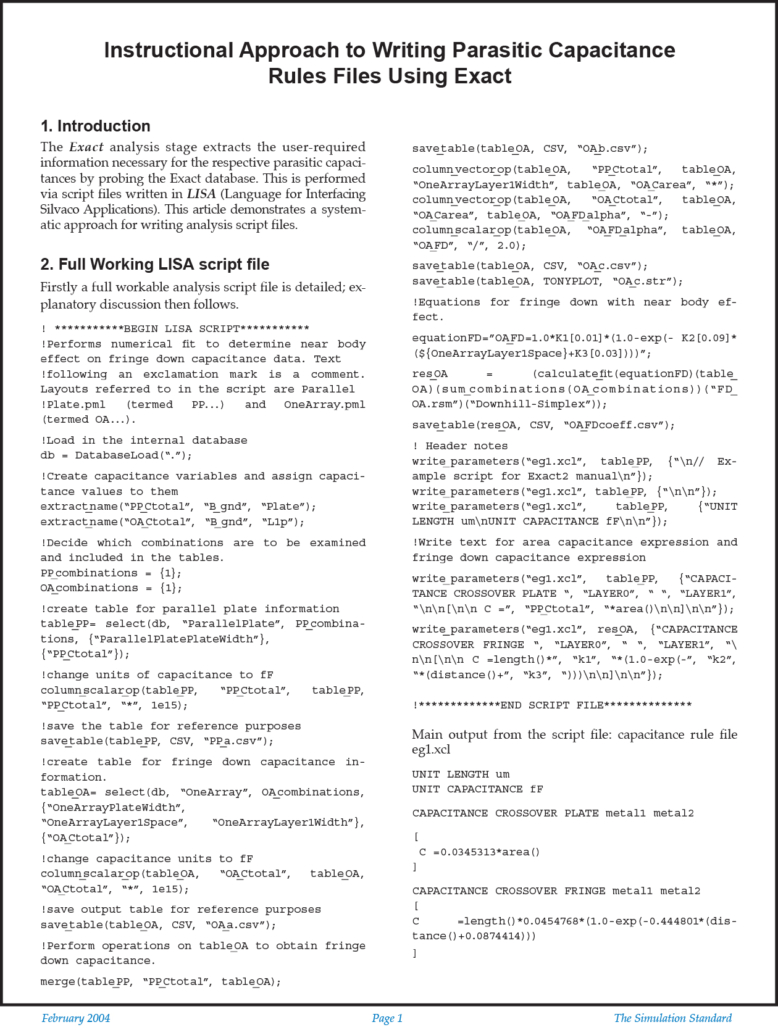
Instructional Approach to Writing Parasitic Capacitance Rules Files Using Exact
1. IntroductionThe Exact analysis stage extracts the user-required information necessary for the respective parasitic capacitances by probing the Exact database. This is performed via script files written in LISA (Language for Interfacing Silvaco Applications). This article demonstrates a systematic approach for writing analysis script files.

